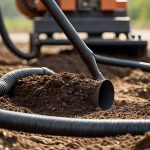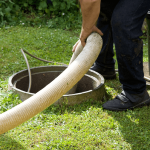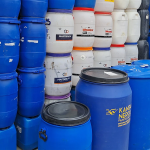Choosing the Right Septic System Installation for Your Rural Property
For rural property owners in Australia, managing household waste effectively is critical to maintaining a healthy and functional living environment. Unlike urban areas connected to sewage networks, rural locations require private, on-site property sewage systems, and selecting the right septic system installation involves understanding your property’s unique characteristics and matching them with the most suitable septic solutions.
This article outlines the various types of septic systems that are available in Australia and offers guidance on choosing the best option based on factors such as household size, property soil conditions, water usage, and land layout.
Understanding Property Sewage Systems
Before committing to a specific type of septic system, it’s important to understand how property sewage systems function. At their core, these systems are designed to treat and dispose of household wastewater efficiently and safely, without harming the surrounding environment.
For rural properties, this typically involves the installation of an underground septic tank combined with a drainage field or other dispersal method. The system’s design must meet local council regulations and environmental standards, especially given the absence of town sewer connections. Each septic system varies in how it treats wastewater, which impacts the installation process and long-term maintenance needs.
Types of Septic Solutions
There are several types of septic solutions suitable for rural properties. The most common include conventional septic systems, aerated wastewater treatment systems (AWTS), and evapotranspiration systems.
A conventional septic system installation usually includes a two-chambered tank and a leach drain system. It works well for properties with well-draining soil and adequate space. Alternatively, AWTS units actively treat wastewater using oxygen, making them more suitable for properties with limited drainage options or higher environmental sensitivity.
Evapotranspiration systems are less common but can be ideal in arid areas with poor soil conditions. These systems rely on a sealed trench and plant uptake to remove water, rather than allowing it to drain into the ground.
When considering septic solutions, property owners should match the system to both the environmental conditions and household requirements.
Soil Type and Land Characteristics
One of the most important factors influencing septic system installation is soil type. The soil’s ability to absorb and filter wastewater determines what kind of septic system is viable.
Testing is often required to measure how quickly water drains through the property’s soil. Sandy or loamy soils are generally ideal for standard absorption trench systems. In contrast, clay soils retain water and may require alternative solutions such as mound systems or pressurised dispersal setups.
Topography also plays a role. Sloped land may necessitate special engineering solutions to prevent runoff or uneven drainage. Likewise, flood-prone areas require extra caution in selecting a system to avoid contamination or failure during heavy rain events.
Household Size and Water Usage
A septic system’s capacity and performance should correspond to both the number of residents and their average water use. Larger households generate more wastewater, increasing the demands placed on any septic system.
For a small family, a conventional septic tank might be adequate. However, for larger or multi-generational households, an AWTS or a system with a larger tank and drainage capacity may be more appropriate. Properties using water-saving appliances and fixtures can reduce the strain on their system, but high-water usage from activities like laundry or long showers still needs to be considered.
It’s also worth accounting for future growth when planning for your septic system. If your household is likely to expand or if you plan to add a guest house or rental space, it’s advisable to choose a scalable or higher-capacity system upfront.
Compliance and Septic System Installation Process
Installing a septic system in rural Australia requires adherence to local council and state regulations. Before starting any installation, a site and soil evaluation must be completed by a licensed professional. This guarantees that the selected system complies with all health and environmental regulations.
Once approved, the installation itself should be carried out by an experienced contractor familiar with rural septic solutions. Proper installation is essential for long-term reliability, reducing the risk of future repairs or environmental damage.
Post-installation, ongoing maintenance such as regular tank pumping and inspection of the drain field is necessary to keep the system functioning properly.
Making an Informed Decision
Choosing the right septic system for your property is not a one-size-fits-all decision. Each piece of land has unique characteristics, and every household operates differently. By evaluating your property’s soil conditions, topography, household size, and water usage, you can narrow down the most suitable septic solution for your needs.
Taking the time to understand your options and working with experienced professionals will ensure that your septic system is safe, efficient, and compliant with Australian regulations.
Consult Clarence Valley Septics for Your Septic System Installation Today
If you require an inspection or maintenance to your septic system, Clarence Valley Septics is here to help. With years of experience in delivering septic solutions, we offer a range of services that ensure your system will perform reliably for years to come. Contact us today on 6645 3100 or via our website to learn more.


